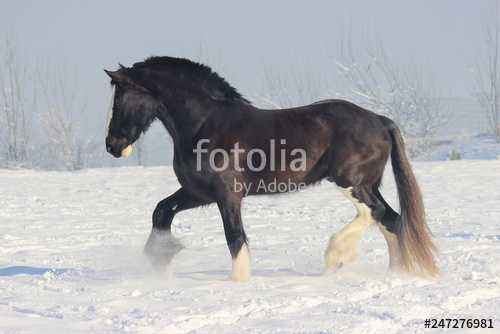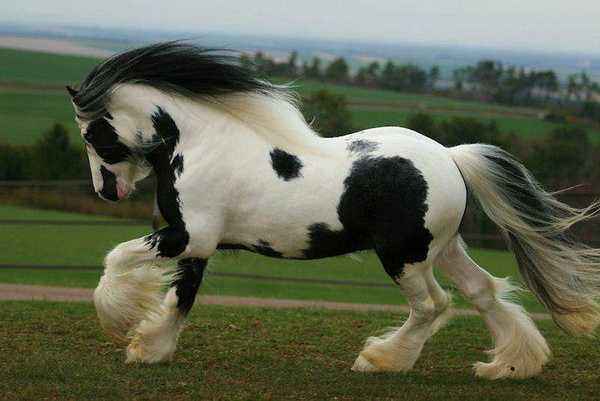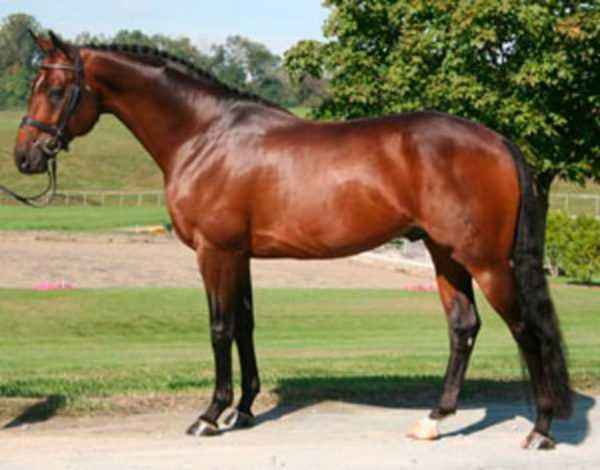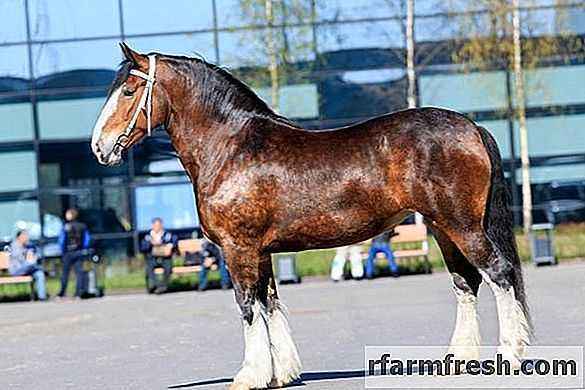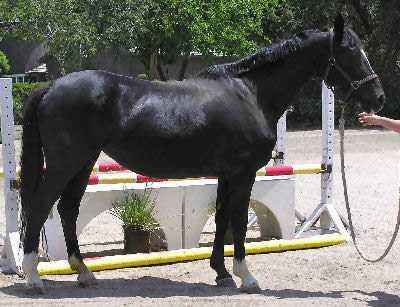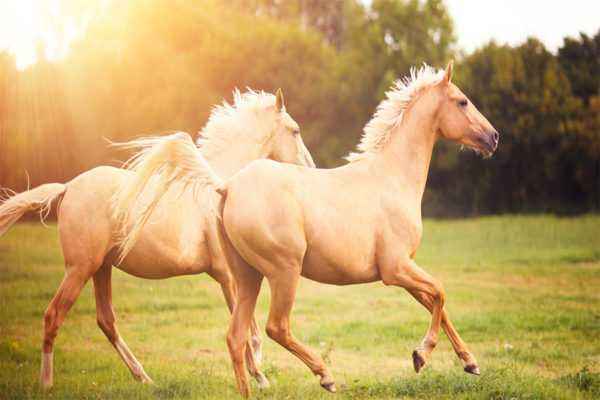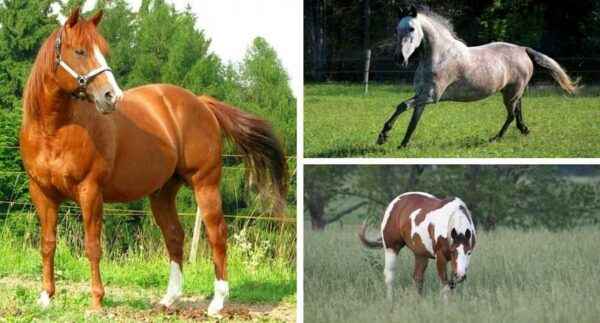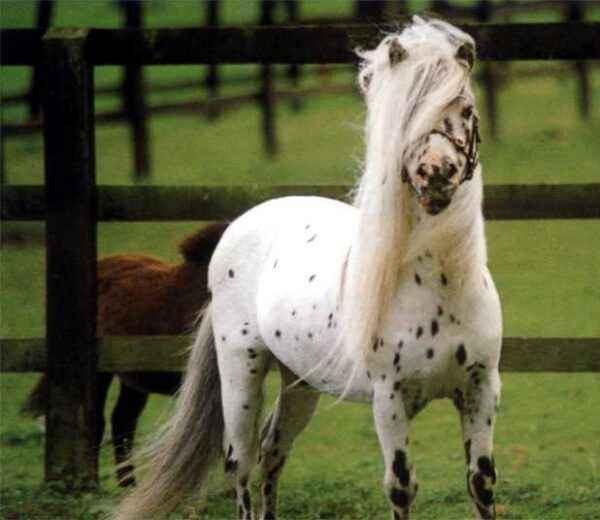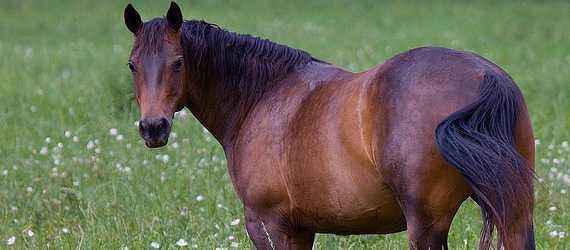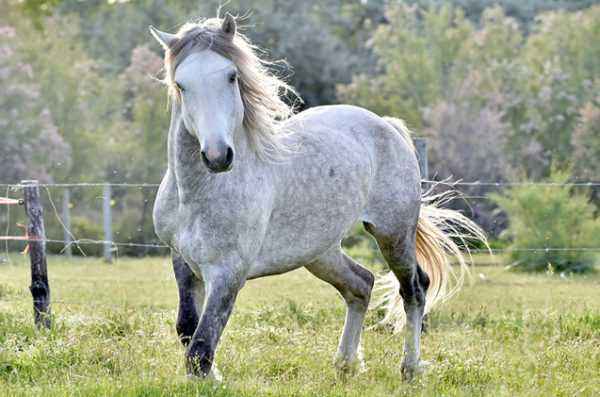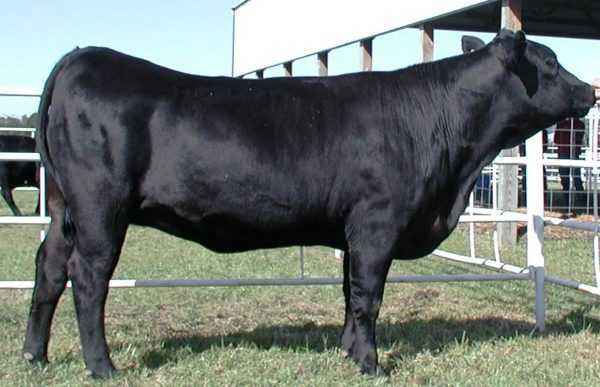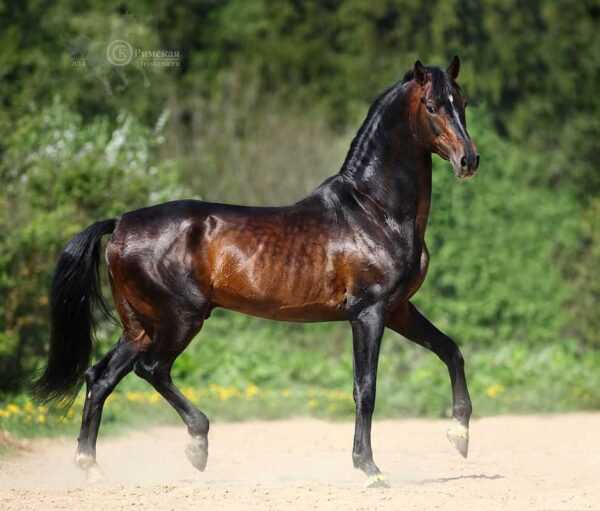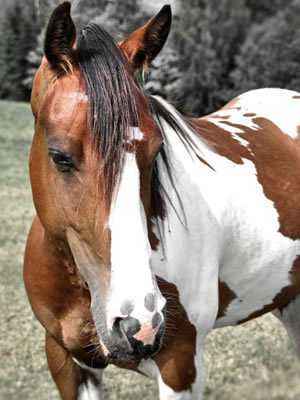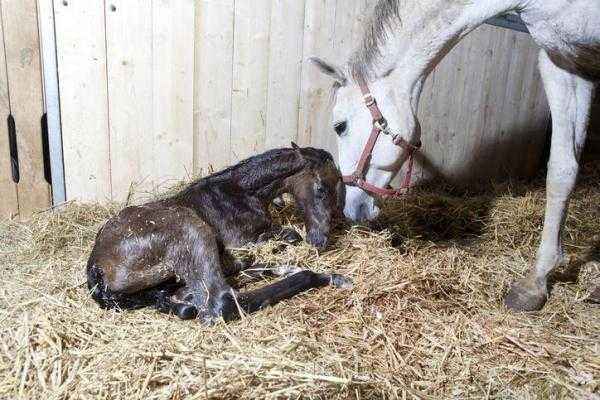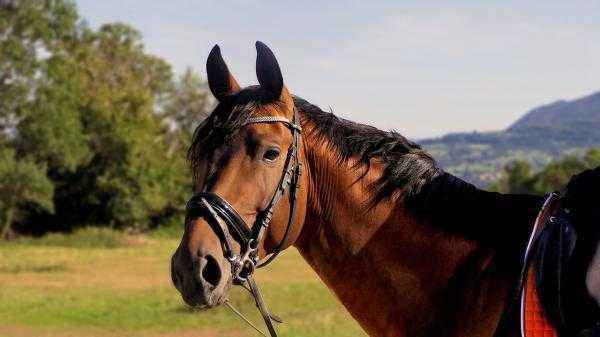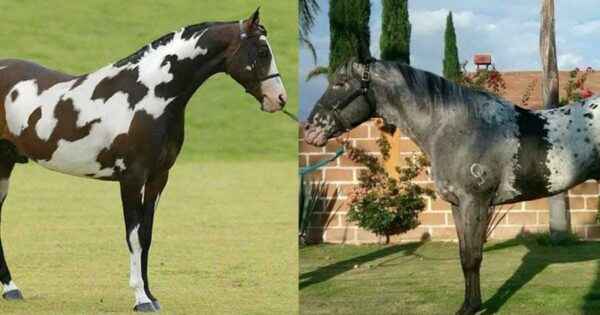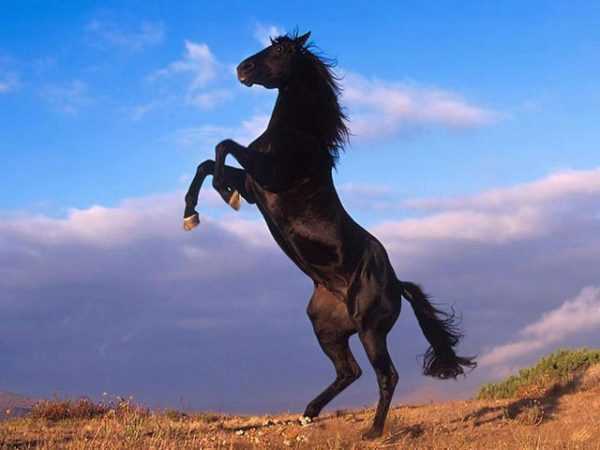The Arabian horse is the most famous and beautiful breed in the world. Its appearance is shrouded in many legends. The breed appeared in the IV-VII centuries on the Arabian Peninsula. From there she came to Europe, approximately in the VIII century, mass horses began to be imported during the Crusades. Arabian horses became the ancestors of many modern varieties of horses. Until now, the possession of such a horse is a sign of a special high status and prestige of the owner.Only the best stud farms are engaged in breeding.
- General characteristics of the breed
- Character of the horses
- Varieties of suits
- Varieties of the exterior
- How to choose an Arabian horse
- Care and maintenance
- Legends and facts
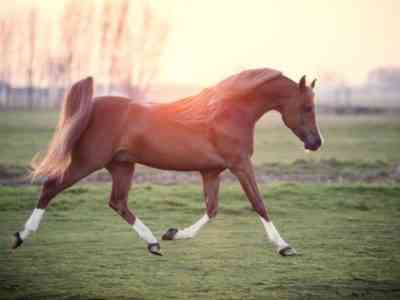
Arabian breed of horse
General characteristics of the breed
Arabian breed of horse is different harmonious physique, small stature, agility and speed. The main purpose of these horses is horse racing, participation in the breeding of other breeds. Arabs used their horses in military campaigns to move around the desert. The breed became very hardy, few horses can compare with it in this. Description and characterization of the appearance of modern Arabian horses of pure blood:
- Height at the withers at the stallion – 153 cm, at the mare – 150 cm.
- Girth in the chest area of the stallions – 178- 179 cm, for mares – 172-173 cm.
- Girth in the metacarpus of males – 20 cm, females – 18 cm.
- Weight – around 450 kg.
- The head is dry.
- The forehead is wide, with square outlines.
- The muzzle is narrow with a characteristic concave nose bridge (pike profile).
- The ears are quite short.
- The neck is elongated, with a bend, like a swan, strong and muscular.
- The chest is expanded and deepened.
- The back is shortened and completely straight.
- Croup with well-developed muscles.
- The legs are dry, strong and strong.
- The legs are elongated.
- Rounded hooves.
- The tail is raised upward, developing during the run, like a rooster.
- All muscles and tendons on the horse’s body should be clearly visible.
A distinctive feature of all Arabian horses is the reduced number of calls and ribs compared to other breeds. These horses have 17 rather than 18 ribs, 5 vertebrae in the lower back instead of 6 and 16 vertebrae in the tail instead of 18, as in other varieties. On this basis, it is often determined how purebred the Arabian horse is.
The nature of the horses
The character of the Arabian horse, despite his playfulness, is very calm and supple. For a century, horses lived next to a man, the Bedouins kept them in their tents with their whole family, they drank milk and fed better than they ate. Because the Arabs are strongly attached to their masters. They say that this is the kindest and most loyal breed. In addition, this breed of horses has a well-developed hearing, horses are perfectly oriented in space and always find their way home.
IQs are very high, stallions and mares are very trainable. They are not only smart, but also submissive.They will listen to the owner during any treatment, although they are best perceived to be kind and encouraging. Oriental horses participate in competitions requiring good submission and high intellectual abilities: show jumping, dressage, hurdling, etc.
In addition, horses of the modern breed Arabian thoroughbred are incredible endurance. They are able to ride 160 km per day and repeat this record for 6-7 days in a row. At the races of this breed there are no equal. Despite the relatively small stature, the stallion calmly carries on the back of an adult rider. In speed, these horses are now inferior to some modern breeds, for example, a thoroughbred horse. But their qualities are more balanced, they can maintain physical fitness and activity over long distances.
Arabian mare is very prolific, females are able to give birth to foals until they are old. The lifespan of horses is about 30 years, they are champions among all thoroughbred horses. They are distinguished by good health and rarely get sick. Not even the best conditions of detention and poor treatment do not affect the health of the horses.
Varieties of suits
This breed of racehorse has several varieties of color. Some suits are quite common, others are considered extremely rare. Here are the colors of the horses that are now officially recognized:
- Gray in different shades. This suit is the most common, it is considered a visiting card of Arabs horses.With age, speckles or “buckwheat” appear on the wool.
- Roan. This suit is sometimes called pinto or sabino, but among horses of this variety it is defined as roan. The color is quite rare, in Europe for a long time they did not recognize this color among Arab horses, individuals were rejected, but the color took root well in the USA.
- White. Noble color, it happens in the elite representatives of the breed.
- Gnadey and red. These colors are quite common, but still rarer than gray.
- Black crow. The black color of Arabian horses is also rare, these horses look very elegant.
- Silver-bay. Probably the most beautiful suit among all. Previously, it was considered to be playful, but now the classification has been revised.
The cost of horses often depends on the suit, since now the Arabian horse is often bred for the sake of beauty and prestige. The simplest is considered red and bay. Of particular value are silver stallions. White and black are rare, so they are also highly valued. True connoisseurs of the breed prefer gray, less often roan horses.
Exterior Varieties
Over the centuries of breeding of the Arabian horse breed, many different families have been formed. The most famous are ancient Arabian: ateshes, kadishi, kohlani. It is from the kohlani that all modern thoroughbred horses come from.In addition, many countries in Europe have their own horse breeding factories that breed Arabian horses. The most famous are English, French and Polish.
By the exterior qualities, the Arabian horse of pure blood is divided into 4 types:
- Kochelain. Massive Arabian thoroughbred horse, firmly knocked down with very strongly developed muscles. The chest is enlarged, and the skeleton is extremely strong. Kochelains are very hardy, they often win races. They are characterized by a bay or red coat.
- Siglava. The most beautiful variety of Arabian horses. Their body structure is not as powerful as that of the Kochelines, but their dimensions are somewhat smaller. By agility, the Siglavi is inferior to the previous exterior type. But this variety has retained as much as possible all the external qualities of the old breed of horses.
- Kochelain-Siglavi. These horses are characterized by signs of both exterior types. They preserved the beautiful silhouette, dryness of the Siglavi forms and acquired agility and endurance of the Kochelaines. In addition, they are characterized by high growth and high performance.
- Hadban. The largest of all riding horses of the Arabian breed, are distinguished by speed, agility, endurance, win many races, can compete with a thoroughbred horse breed. Unfortunately, the characteristic external features of the Arabs are not very pronounced.
The breeding of Arabian horses must be carried out strictly within the framework of its exterior type.Unfortunately, not all stud farms adhere to this rule now. How purebred is the modern Arabian horse?
How to choose an Arabian horse
With the decrease in the economic value of horses in the early twentieth century, many breeds were on the verge of extinction. This was not the case with Arabian horses, as they were preserved in many houses of aristocrats and in the Middle East. In Russia, after the revolution, these horses almost disappeared, the livestock began to revive only in the 30s.
Many breeders believe that the state of the modern Arabian horse breed is deplorable. Studs, in the pursuit of profit, pay little attention to exterior and working qualities. In Arabia, finding real Arabs is now unrealistic. Conservation of the breed is carried out by the international organization of Arabian horse breeding. She makes sure that horses regularly participate in horse racing. For representatives of the breed arrange a separate championship. Only individuals with pure blood were allowed to breed.
Before buying, you need to consider what the Arabian horses look like in the photo, and then carefully examine all the parameters and standards of the breed. The Arab thoroughbred stallion must have:
- Elongated tibia with hips, as well as neck and forearm, with a small stature.
- Shortened ears, tail, sacral area and headstock.
- Chest, croup and forehead wide.
- The muzzle is narrower, with a specific concavity, forming a characteristic pike profile.
- The tail in the gait is always raised.
How much does a horse cost from the east? Purebred Arabian horse – one of the most expensive horses in the world. The cost ranges from 1-2 million US dollars. The record price for the stallion of this breed is $ 11 million. In Russia, the breeding of these horses is done by the Khrenovsky and Tersky stud farms. You can find horses in the Leningrad, Moscow, Pskov, Tver regions. There are horse farms where you can choose a horse in Tatarstan.
Care and maintenance
The Arabian breed of domestic horses comes from the hot countries of the Middle East, therefore it is sensitive to cold and dampness. Pets need dry stables with good ventilation, heating and no drafts. The litter should always be dry, clean and thick enough. The stall cannot be made cramped, horses love space, because they have lived for centuries freely in their homeland.
Horses of this breed have sensitive legs and joints, they often suffer from arthritis. This is another argument why it should be dry and warm in the stable. Stallions must not be allowed to stagnate for long. Walks should be daily, lasting at least 2-3 hours. Horses of this breed can endure long transitions, so they need to arrange “trips” from time to time. Especially in cases where they do not participate in professional races, but are used only for walking and amateur riding.
- Arabs believe that the breed of horses was created by Allah himself, appointing it the main among all animals.
- They say that once in the oasis, the prophet Muhammad met mares who drank water. He called them, but only 5 ran to him. From them came all the other Arabian horses.
- The previous legend has another option. Horses were specially taught to stop drinking by the sound of the pipe. Once they were not watered for several days, and then they were brought to a stream. As soon as the horses began to drink, the bugle sounded. Only seven mares obeyed his sound, and they were selected for further breeding.
Here are some interesting facts about the Arabian horse breed:
- In Arabia, they paid attention to the pedigree qualities mares, not stallions, as in other countries. It was believed that mothers, carrying foals in the womb, give them more useful properties than fathers at conception.
- In the Arabian military cavalry, mainly mares, not Arabian stallions participated.
- In breeding, special attention was paid to hiding the rider. Because of this, the horses appeared a long curved neck (covers the rider in front) and a magnificent tail, which rises in gait (to cover behind).
- Almost all modern breeds have in their veins the blood of Arabs, even heavy trucks. The most famous descendants of the Arabian horses are the thoroughbred racehorse, the Oryol trotter, the Andalusian breed, the Austrian Lippician, the Portuguese Lusitano.
- For centuries, Arabian horses have been considered the best gift for aristocrats. Many famous stallions appeared in Europe thanks to the offerings of the Turkish sultans, Iranian shahs and Arab rulers.
- Most Arabian horses in the Middle Ages were imported not from the Arabian Peninsula, but from Syria.
- In 70- X years of the last century in the United States, the Arabian breed of horses began to be regarded as a good way of investing, because of this, prices soared to almost $ 10 million per head.
- This breed was recreated in one of the series known computer game “The Sims.”
- Head of the Arabian poro riding horse s or the entire horse depicted on many banknotes in the Arab world
Arabian horse -. it is a symbol of the ancient horse breeding. She still has not lost its relevance, participates in competitions, lives in prestigious private stables. Perhaps the horse is inferior to many other breeds in speed of running and agility, but the beauty and ancient legends associated with horses do not allow the breed to go into oblivion. An expensive oriental horse in the stable is a symbol of the well-being of his master. Not a single elite exhibition is complete without it, so it is worth taking a closer look at these beauties.
